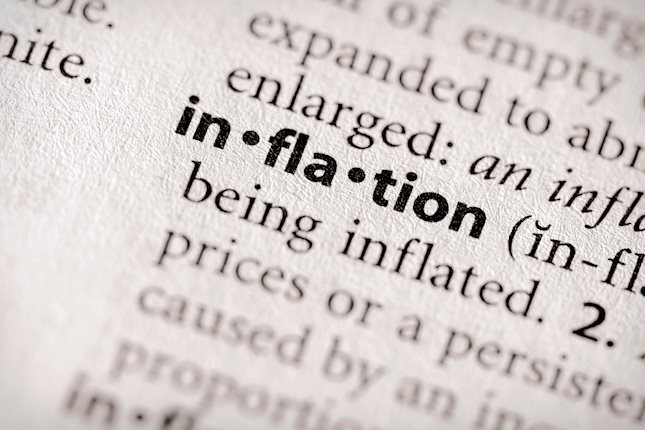- The US Dollar turns choppy as strike risks escalate at biggest US car makers.
- Traders will likely keep powder dry for the Fed interest rate decision on Wednesday.
- The US Dollar Index breaks below 105 and rebounce at start US session.
The US Dollar (USD) takes a step back ahead of the US Federal Reserve (Fed) rate decision on Wednesday with headlines risks picking up on the strikes at the three major car builders in the US and US goverment shutdown looming. Expectations are for no hike, though with the recent resurgence in headline inflation via energy prices, US Fed Chair Jerome Powell might be more hawkish than predicted.
Traders, meanwhile, have to split and divide their attention between the Fed and Capitol Hill, with a possible US government shutdown looming again. By Thursday, US House Speaker Kevin McCarthy needs to bring a new stopgap bill to the floor for a vote. If the House fails to pass the bill, the probability of a shutdown in October grows more dire.
Daily digest: US Dollar bears tail risks
- A mixed bag of data from the housing side where Building Permits rose from 1.443 million to 1.542 million. Housing starts dropped from 1.452 million to 1.283 million against previous month.
- The US Redbook dropped substantially from 4.6% to 3.6%,
- US Treasury Secretary Janet Yellen commented that a soft landing for the US economy is in the works.
- More strikes are set to emerge as talks fail between the unions and the biggest car makers in the US. At risk, strikes could start biting into the Gross Domestic Product (GDP) by 0.3% analysts calculated.
- The US Treasury will be auctioning 20-year Treasuries.
- Equities are in the red this Tuesday ahead of the US Fed meeting. Several trading desks are reporting some profit-taking ahead of a possible failure of the stopgap bill to avoid a US shutdown. US eauity futures are down over 0.50% overall.
- The CME Group FedWatch Tool shows that markets are pricing in a 99% chance that the Federal Reserve will keep interest rates unchanged at its meeting in September. Traders though will need to watch out for any hawkish rhetoric from Powell as inflation has been ticking up recently.
- The benchmark 10-year US Treasury yield trades at 4.31% and peaked in early Monday trading before starting to sell off. A small flight to safe havens with US bonds being bought triggers a decline in yields.
US Dollar Index technical analysis: distortion before Fed
THe US Dollar was facing some selling pressure on Monday, which actually is not a bad thing as such. After a ninth consecutive week of gains for the US Dollar Index (DXY), the Relative Strength Index (RSI) is a fair bit into overbought territory. A few days of sideways to lower would help cool down the rally a bit before entering the next leg up, where the US Fed rate decision could act as a catalyst.
The US Dollar Index (DXY) has edged up, reaching 105.41. This is just a sigh away from the 2023 high near 105.88. Should the DXY be able to close above there for the week, expect the US Dollar to go even stronger in the medium-turn.
On the downside, the 104.44 level seen on August 25 kept the Index supported on Monday, halting the DXY from selling off any further. Should the uptick that started on September 12 reverse and 104.44 gives way, a substantial downturn could take place to 103.04, where the 200-day Simple Moving Average (SMA) comes into play for support.
Central banks FAQs
What does a central bank do?
Central Banks have a key mandate which is making sure that there is price stability in a country or region. Economies are constantly facing inflation or deflation when prices for certain goods and services are fluctuating. Constant rising prices for the same goods means inflation, constant lowered prices for the same goods means deflation. It is the task of the central bank to keep the demand in line by tweaking its policy rate. For the biggest central banks like the US Federal Reserve (Fed), the European Central Bank (ECB) or the Bank of England (BoE), the mandate is to keep inflation close to 2%.
What does a central bank do when inflation undershoots or overshoots its projected target?
A central bank has one important tool at its disposal to get inflation higher or lower, and that is by tweaking its benchmark policy rate, commonly known as interest rate. On pre-communicated moments, the central bank will issue a statement with its policy rate and provide additional reasoning on why it is either remaining or changing (cutting or hiking) it. Local banks will adjust their savings and lending rates accordingly, which in turn will make it either harder or easier for people to earn on their savings or for companies to take out loans and make investments in their businesses. When the central bank hikes interest rates substantially, this is called monetary tightening. When it is cutting its benchmark rate, it is called monetary easing.
Who decides on monetary policy and interest rates?
A central bank is often politically independent. Members of the central bank policy board are passing through a series of panels and hearings before being appointed to a policy board seat. Each member in that board often has a certain conviction on how the central bank should control inflation and the subsequent monetary policy. Members that want a very loose monetary policy, with low rates and cheap lending, to boost the economy substantially while being content to see inflation slightly above 2%, are called ‘doves’. Members that rather want to see higher rates to reward savings and want to keep a lit on inflation at all time are called ‘hawks’ and will not rest until inflation is at or just below 2%.
Is there a president or head of a central bank?
Normally, there is a chairman or president who leads each meeting, needs to create a consensus between the hawks or doves and has his or her final say when it would come down to a vote split to avoid a 50-50 tie on whether the current policy should be adjusted. The chairman will deliver speeches which often can be followed live, where the current monetary stance and outlook is being communicated. A central bank will try to push forward its monetary policy without triggering violent swings in rates, equities, or its currency. All members of the central bank will channel their stance toward the markets in advance of a policy meeting event. A few days before a policy meeting takes place until the new policy has been communicated, members are forbidden to talk publicly. This is called the blackout period.
Information on these pages contains forward-looking statements that involve risks and uncertainties. Markets and instruments profiled on this page are for informational purposes only and should not in any way come across as a recommendation to buy or sell in these assets. You should do your own thorough research before making any investment decisions. FXStreet does not in any way guarantee that this information is free from mistakes, errors, or material misstatements. It also does not guarantee that this information is of a timely nature. Investing in Open Markets involves a great deal of risk, including the loss of all or a portion of your investment, as well as emotional distress. All risks, losses and costs associated with investing, including total loss of principal, are your responsibility. The views and opinions expressed in this article are those of the authors and do not necessarily reflect the official policy or position of FXStreet nor its advertisers. The author will not be held responsible for information that is found at the end of links posted on this page.
If not otherwise explicitly mentioned in the body of the article, at the time of writing, the author has no position in any stock mentioned in this article and no business relationship with any company mentioned. The author has not received compensation for writing this article, other than from FXStreet.
FXStreet and the author do not provide personalized recommendations. The author makes no representations as to the accuracy, completeness, or suitability of this information. FXStreet and the author will not be liable for any errors, omissions or any losses, injuries or damages arising from this information and its display or use. Errors and omissions excepted.
The author and FXStreet are not registered investment advisors and nothing in this article is intended to be investment advice.
Recommended content
Editors’ Picks

EUR/USD trades deep in red below 1.0300 after strong US jobs report
EUR/USD stays under bearish pressure and trades below 1.0300 in the American session on Friday. The US Dollar benefits from the upbeat jobs report, which showed an increase of 256,000 in Nonfarm Payrolls, and forces the pair to stay on the back foot heading into the weekend.

GBP/USD drops toward 1.2200 on broad USD demand
GBP/USD extends its weekly slide and trades at its weakest level since November 2023 below 1.2250. The data from the US showed that Nonfarm Payrolls rose by 256,000 in December, fuelling a US Dollar rally and weighing on the pair.

Gold ignores upbeat US data, approaches $2,700
Following a drop toward $2,660 with the immediate reaction to strong US employment data for December, Gold regained its traction and climbed towards $2,700. The risk-averse market atmosphere seems to be supporting XAU/USD despite renewed USD strength.

Sui bulls eyes for a new all-time high of $6.35
Sui price recovers most of its weekly losses and trades around $5.06 at the time of writing on Friday. On-chain metrics hint at a rally ahead as SUI’s long-to-short ratio reaches the highest level in over a month, and open interest is also rising.

Think ahead: Mixed inflation data
Core CPI data from the US next week could ease concerns about prolonged elevated inflation while in Central and Eastern Europe, inflation readings look set to remain high.

Best Forex Brokers with Low Spreads
VERIFIED Low spreads are crucial for reducing trading costs. Explore top Forex brokers offering competitive spreads and high leverage. Compare options for EUR/USD, GBP/USD, USD/JPY, and Gold.